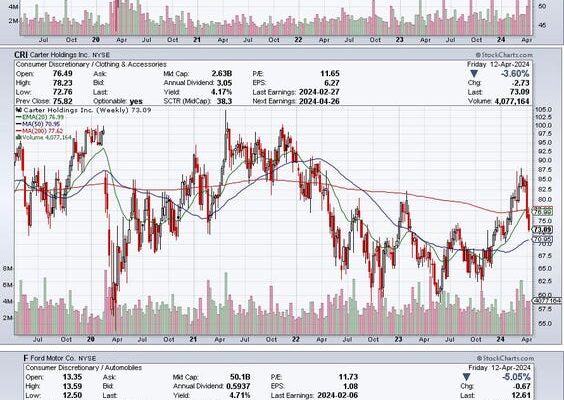The IRS Is Working On A New Tax Form To Capture Your Crypto Activity
Share to FacebookShare to TwitterShare to Linkedin The IRS is looking to get more efficient in collecting taxes from crypto trading
getty What Happened The Infrastructure Act passed by the U.S. Congress in 2021 brought cryptocurrency exchanges under the controversial “broker” definition and subjected them to the IRS information reporting regime. As a result, starting January 1, cryptocurrency exchanges will be required to report their customers’ annual cryptocurrency gains and losses to the Internal Revenue Service, similar to stock brokerages.
The Treasury is crafting regulations related to the Infrastructure Act. Regulations (commonly referred to as Regs) interpret legislation and give specific directions on how to comply with the law. As a part of the Regs, the IRS is reportedly working on introducing a brand new tax form called Form 1099-DA for exchanges to capture individual annual cryptocurrency activity subject to taxation. The draft Regs are expected to come out in the next coming months, and for now the specifics of the form and the information it will capture are unknown. If adopted, exchanges will use the new form to report your cryptocurrency gains and losses to the IRS.
Key Concepts What are 1099s? A 1099 is a form filled out by financial institutions summarizing a client’s annual activity subject to taxes. There are a few different types, including: 1099-Bs (proceeds from broker and barter exchange transactions) issued by stock brokers to report annual gains and losses arising from stock transactions; 1099-INT (Interest Income) forms, which are used by financial institutions to report annual interest income; and 1099-MISC (Miscellaneous Information) forms that some cryptocurrency exchanges use to report staking and similar types of income.
There are three copies to each 1099 form – Copy A, Copy 1, and Copy B. The first two are filed with the IRS and the taxpayer’s state, respectively, by the financial institution. Copy B is sent out to customers to be filed with their taxes.
For example, say you purchased one unit of $TSLA for $500 and sold it for $1,200 on Robinhood during 2021. By January of this year, Robinhood was required to fill out a Form 1099-B showing $700 ($1,200 – $500) of capital gains subject to taxes. Copy A and Copy 1 report this amount to the IRS and your state, respectively. You receive Copy B to help you file your taxes.
The purpose of 1099s Thanks to information reported to the IRS by financial institutions through 1099s, the agency knows your annual gains and losses before you file your taxes. If you file a return without including that activity, the IRS can automatically detect the discrepancy and send you a tax notice to correct the error. Thus, 1099s help ensure that taxpayers engaging in income-generating activities with financial institutions are tax compliant.
Form 1099-DA Currently, there’s no dedicated 1099 form to capture one’s annual cryptocurrency gains and losses. In the absence of a cryptocurrency-specific tax form, certain exchanges have used Form 1099-K to report cryptocurrency activity in the past. Some have decided not to issue any forms for gains and losses. As a result, the information reported to the IRS by exchanges has been poor to non-existent for a long time.
This has led to lower tax compliance rates among crypto users. Because customers don’t receive a form at the end of the year they falsely believe that there’s no activity to report and nor taxes to pay.
For example, 99% of taxpayers report wage income when they receive a Form W-2 (Wage and Tax Statement) from employers. Over 80% of stock account holders report capital gains and pay taxeswhen they receive a Form 1099-B from brokerages summarizing the annual capital gain/loss activity. On the other hand, If a third party doesn’t generate a tax form, more than 50% of taxpayers do not comply with taxes. (U.S. Government Accountability Office)
Effect of Third-Party Information Reporting on Individual Income Tax Compliance, Tax Years 2011-2013
GAO Form 1099-DA aims to change this by capturing cryptocurrency activity and mandating exchanges to report it to the IRS on an annual basis. It is reasonable to expect that this new form will report the information needed to calculate gains (or losses) such as the asset type, date purchased, date sold, gross proceeds and cost basis.
1099-DA Potential Pitfalls for Multi-Exchange Users Although information reporting has clearly increased tax compliance in many non-crypto-related areas, following the same traditional system in crypto can easily create more gaps or even completely fail due to decentralized finance, transfers and self-custody.
Rapidly growing DeFi exchanges such as Uniswap and dYdX will be unable to issue any form of 1099s because they are not collecting so-called Know-Your-Customer (KYC) information (name, address and Social Security number) from users. This information is generally required to file any form of 1099 with the IRS and the states.
Additionally, asset transfers between crypto wallets and exchanges are extremely common, compared with the traditional securities world. These transfers between centralized exchanges to/from DeFi and non-complying overseas exchanges will also lead to incomplete and inaccurate 1099s due to cost-basis gaps.
Moreover, self-custody is common in the crypto world to ensure the privacy and security of assets. Self-custodied assets will also make it harder for exchanges to issue complete 1099s because the cost-basis information is not usually available.
Finally, multi-exchange users will likely get multiple 1099-DAs from various platforms. This can lead to confusion and will require taxpayers to use crypto tax software to reconcile activity across multiple wallets and exchanges.
If you are a single-exchange user (a shrinking segment of crypto investors), 1099-DAs will likely show all the information necessary for you to file taxes accurately. This will make your tax filings faster, easier and cheaper than they are today.
Effective Date According to the Infrastructure Act, exchanges are required to follow information reporting rules starting Jan. 1, 2023, and issue 1099-DAs to customers in the first quarter of 2024 for the previous tax year. But because the rules have not yet been publicized and made available for public comment, the timetable may be extended by a year.
Next Steps Expect to see the draft Form 1099-DA form along with proposed Regs in the next coming months.
Further Reading
Quick Guide To Filing Your 2021 Cryptocurrency & NFT Taxes Large Crypto Losses May Not Become Instant Tax Write-0ffs, But Here’s What You Can Do IRS May Not Tax Passive Income From Holding Crypto Right Away
Follow me on Twitter or LinkedIn. Check out my website or some of my other work here.












 Bitcoin
Bitcoin  Ethereum
Ethereum  Tether
Tether  Solana
Solana  USDC
USDC  Lido Staked Ether
Lido Staked Ether  XRP
XRP  Dogecoin
Dogecoin  Toncoin
Toncoin